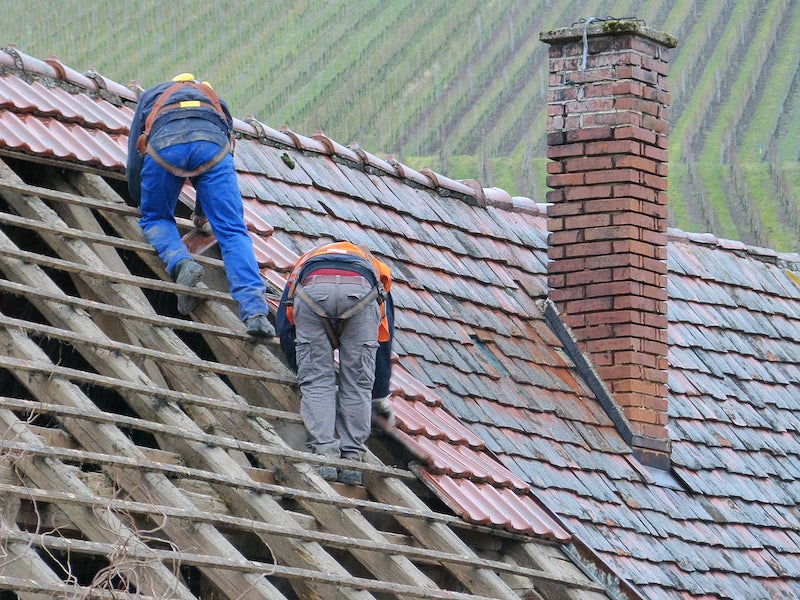Your ridge tiles aren’t just roof decorations – they’re your home’s first line of defense against the elements. Here’s what you need to know.
Understanding Ridge Tiles: More Than Just a Finishing Touch
Ridge tiles serve as the critical junction point where your roof’s slopes meet, playing a vital role far beyond mere aesthetics. These specialised tiles are engineered to protect one of your home’s most vulnerable areas – the ridge line. In the UK’s often challenging weather conditions, properly installed ridge tiles prevent water ingress, protect against wind damage, and maintain your roof’s structural integrity. Recent studies show that up to 60% of roof-related issues stem from compromised ridge tiles, highlighting their importance in your home’s defence system.
As part of your overall roofing system, ridge tiles work in harmony with other components to create a weatherproof barrier. They sit atop the highest point of your roof, where they must withstand the full force of wind, rain, and varying temperatures. Modern ridge tile systems often incorporate sophisticated ventilation features, helping to regulate attic temperature and prevent moisture buildup – crucial factors in extending your roof’s lifespan.
Types of Ridge Tiles: Finding Your Perfect Match
When selecting ridge tiles for your property, you’ll encounter various materials and styles, each with distinct advantages. Understanding these options is crucial for making an informed decision:
- Clay Ridge Tiles: Traditional choice offering excellent durability and aesthetic appeal, particularly suitable for period properties
- Concrete Ridge Tiles: Cost-effective option with good longevity, available in numerous profiles and colours
- Composite Ridge Tiles: Modern alternative combining lightweight properties with excellent weather resistance
Popular ridge tile profiles include:
- Half Round: Classic design suitable for most roof types
- Angular: Contemporary look ideal for modern buildings
- V-shaped: Specialist profile for specific architectural styles
- Ornamental: Decorative options for heritage properties
The Technical Side: Installation and Ventilation
Professional installation of ridge tiles requires precise methodology and attention to detail. Current building regulations in the UK mandate specific installation requirements, including proper ventilation and secure fixing methods. The installation process typically involves:
First, ensuring the roof structure is sound and properly prepared with appropriate underlayment or ridge vent systems. Next, carefully aligning and securing each tile using modern mechanical fixing methods – gone are the days of relying solely on mortar beds. Statistics show that mechanically fixed ridge tiles are 40% more resistant to storm damage compared to traditionally bedded alternatives.
Making the Right Choice: Aesthetic and Practical Considerations
Selecting the right ridge tiles involves balancing visual appeal with practical performance. Consider these key factors:
- Architectural style of your property
- Local planning requirements (particularly in conservation areas)
- Compatibility with existing roof materials
- Environmental exposure and weather conditions
- Long-term maintenance implications
For period properties, custom ridge tiles can be manufactured to match original specifications, ensuring historical accuracy while meeting modern performance standards. Heritage properties typically require specialised ridge tiles that can cost up to 50% more than standard options, but this investment is crucial for maintaining architectural integrity.
Maintenance and Care: Protecting Your Investment
Regular maintenance is essential for ensuring your ridge tiles continue to perform effectively. Watch for these warning signs:
- Cracked or slipped tiles
- Damaged or deteriorating mortar
- Water stains in your loft space
- Visible daylight through ridge joints
- Excessive moss or algae growth
Annual inspections can extend ridge tile lifespan by up to 25%, making them a worthwhile investment in your property’s maintenance schedule. Professional assessment is recommended every 3-5 years, or more frequently in exposed locations.
Expert Tips for Ridge Tile Success
Drawing from extensive experience in the roofing industry, here are crucial considerations for successful ridge tile installation and maintenance:
- Always choose tiles certified to British Standards
- Ensure compatibility with existing roof pitch and materials
- Use appropriate mechanical fixings for your specific tile type
- Consider local weather patterns when selecting profiles
- Maintain adequate ventilation through ridge systems
Conclusion: Securing Your Roof’s Crown
Ridge tiles represent a crucial investment in your property’s protection and appearance. With proper installation and maintenance, quality ridge tiles can last 30-50 years, making them a cost-effective choice for long-term roof protection. Whether you’re replacing existing ridge tiles or planning a new roof installation, professional expertise is essential for ensuring optimal performance and longevity. Contact local roofing specialists for detailed assessments and recommendations tailored to your specific requirements.
FAQ
Do roof ridge tiles need pointing?
The shape of the roof ridge caps will usually be curved or sloped to help rainwater run down the sides of your roof. However, the bedding and pointing of the roof ridge need to be maintained to protect and secure your roof.
Why do ridge tiles blown off?
The main causes of missing ridge tiles are severe weather conditions and mortar erosion. For example, after a particularly heavy storm, ridge tiles have been known to become loose. This can then lead to slipping following bad weather as tiles start to crack or mortar erodes.
Should there be gaps under ridge tiles?
If you are re-bedding your original tiles this shouldn’t be an issue, however some new tiles may have to be cut where two different designs of ridge (such as horizontal and hip ridges) meet to ensure there is a roughly 10mm gap for the cement joint.
What holds ridge tiles in place?
Dry fix ridge systems use nails, screws, unions, clamps, and brackets to keep the tiles in place. This mortar-free method is now the norm, and is preferred for compliance reasons (we’ll discuss the requirements of BS 5534:2014 + A2:2018 in the next section).
Are dry ridge tiles better than cement?
This is because a dry ridge system is mortar free and each tile is mechanically attached, making the whole system is much stronger and able to withstand extreme weather conditions, requiring minimal to no maintenance over the lifespan of the roof.
Sources
[1] https://heckerridgetiles.com
[2] https://www.theroof.store/product/composite-spanish-barrel-hip-ridge-rake-tile
[3] https://ludowici.com/products/accessories/hip-ridge-systems/



